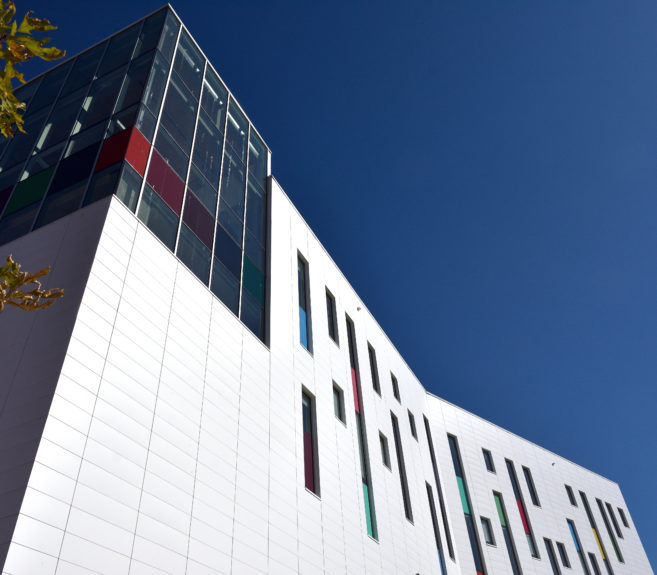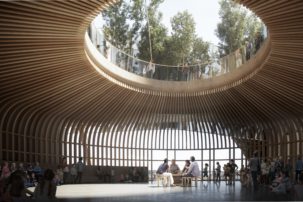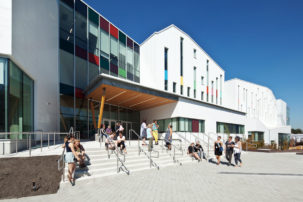According to a recent report, only 25% of the workers in Canada’s tech sector are women. And according to the Canadian Press, women hold just 5% of the leadership roles in Canada’s tech sector. Those numbers are even more imbalanced in regards to Indigenous women.
But at least one virtual- and augmented-reality lab is taking a different path. The IM4 Lab—“IM” is short for “Indigenous matriarchs”—at Emily Carr University of Art and Design was founded in 2018 by Cree/Métis filmmaker and artist Loretta Todd. It’s guided by a group whom she calls “media matriarchs”: filmmaker and journalist Tracey Kim Bonneau, filmmaker and artist Doreen Manuel, ethnobotanist and media artist Cease Wyss and theatre maker Amethyst First Rider.
The IM4 Lab and its staff have accomplished a lot over the first year of its operations: they’ve conducted workshops in VR, AR and 360-degree video for Indigenous youth and adults. They participated in this year’s BC Tech summit as part of the Indigenous House there. They’ve created an Indigenous VR Speaker Series at ECAUD and they’ve presented at the International Indigenous Language Conference. All the public programs are presented free of charge, with cameras and other equipment supplied by the lab.
“As Indigenous people, we have had very sophisticated technologies for a long time, and we create that technology in balance with our communities,” says Todd in a phone interview with Canadian Art. “It is part of our lives, part of Indigenous science, and Indigenous science is something that has always motivated me.”
Todd’s goal with the IM4 Lab was to build a “critical mass” of Indigenous makers in tech through “a very immersive and hands-on learning experience.”
The leadership model also mattered to Todd: “There was an imagining of how we would manage [the Lab] using more Indigenous governance systems,” she says. “And I have often felt that matriarchs are leaders are risk takers—these are women serving the community.”
Operations manager Colin Van Loon, who met Todd at a VR conference two years ago, supports that vision.
“VR, AR and emerging tech are a real opportunity [for us], because as Indigenous people we’ve often been colonized through film and video and other imagery that exists out there,” says Van Loon. “If we can control the means of production, then we can tell our stories…and create our own worlds from the outset.”
Users of the IM4 Lab and its programs vary widely.
“We’ve had Native Education College heath-worker students come in, and we did a session about VR and AR in health care,” says Todd. “At the same time, we have a professor from UBC looking at VR’s possible use in language training. It’s been really exciting.”
Providing all the necessary equipment to IM4 users and participants is also key.
“Equipment accessibility is often one of the stumbling points with how VR has been rolled out,” says Van Loon. “A powerful PC computer, and cameras and headsets, can cost thousands of dollars. Those are prohibitive barriers for people and we really want to make sure we are removing those barriers so people feel they can learn.”
Todd credits the Montreal-based research network AbTec (Aboriginal Territories in Cyberspace), co-founded and co-directed by Jason Edward Lewis and Skawennati, as an ongoing inspiration to the IM4 Lab project in Vancouver. She also points to conversations in Indigenous media arts and tech from the 1990s, like CyberPowWow and Drumbeats to Drumbytes as being part of what has led to this place today.
“We have been leaders in the conceptualizing of the virtual,” says Todd. “So we should also be leaders now in how that technology develops, and what it looks like.”

 Filmmaker and artist Rose Stiffarm at an IM4 Lab VR/AR/360 workshop earlier this year. Photo: Courtesy IM4 Lab.
Filmmaker and artist Rose Stiffarm at an IM4 Lab VR/AR/360 workshop earlier this year. Photo: Courtesy IM4 Lab.







